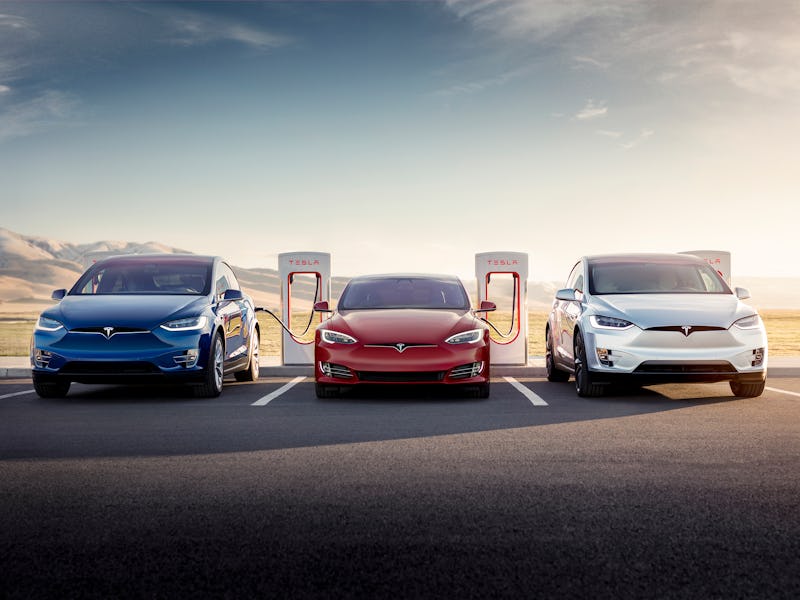Tesla Battery Day leak sparks tease from Elon Musk
Tesla is about to show off its latest advancements in battery technology, and CEO Elon Musk is upping the hype.

Tesla is about to reveal its latest advancements in battery technology, and CEO Elon Musk has suggested that there will be something big in store.
The company is scheduled to hold its live-streamed event on September 22, straight after the annual shareholders meeting scheduled for 1:30 p.m. Pacific time.
On Wednesday, Musk claimed via his Twitter account that the announcements will "be very insane." Musk made the declaration in response to a CleanTechnica article, which focused on a purported photo of Tesla's new battery cell.
The cell image, and the subsequent discussion surrounding it, indicate that anticipation is running high for Tesla's next event.
The battery is one of the most important components of an electric car, and improving it could encourage more drivers to make the switch. It influences how far a car can move between charges, reducing "range anxiety" brought on by a fear of limited high-speed chargers along a given route. It also influences the car's total price, which means savings could make EVs more competitive with traditional cars.
The new leaked image, first shared by Electrek, shows a battery cell produced as part of Tesla's rumored "Roadrunner" project. The in-house project is aimed at reducing costs and boosting production speeds. The cell in the image, Electrek claims, is twice the diameter of the current "2170" cells that Tesla uses for its Model 3 and Model Y vehicles. The "2170" cell is named because it measures 21 millimeters by 70.
Doubling the diameter would lead to quadrupling the internal volume, which could help boost capacity while using fewer cells at a time. This, in turn, would reduce costs due to the reduced amount of packaging used.
Responding to the leak, YouTuber Jordan Giesige wrote on Twitter that his mind "is already blown." Giesige, who hosts the battery-focused channel "The Limiting Factor," explained that he predicted the cell would be "4070," or 40 by 70 millimeters. Rumors around the leak suggest the cell could measure 54 by 98 millimeters.
"This has implications throughout the entire manufacturing stack and for performance specs," Giesige wrote. He explained that Tesla may have found a way to eliminate the packaging that sits above and below a cell.
Giesige also suggested that Tesla's giant cell may be able to make improvements to the battery's density even before making changes to the chemistry. Musk said in 2018 that Tesla's car batteries are currently around 250 watt-hours per kilogram. Giesige wrote this week that Tesla may be able to reach 300 watt-hours with this new cell design. A denser cell could enable innovative new vehicles, like an electric jet that's light enough to take off.
While Musk responded positively to chatter about the photo leak, he also poured cold water on speculation that he'd already revealed the biggest changes ahead of Battery Day.
A CleanTechnica article published Wednesday speculated that Musk may have already signaled a move from nickel cobalt-based cathodes to iron phosphate-based ones. The latter technology has historically lagged behind in energy density, but the article speculates that Tesla could shift as they are cheaper and easier to produce at speed. The article pointed to comments by Musk in recent months as proof.
Responding on Twitter, Musk denied he'd already revealed the biggest changes:
"No, but you make some great points. Important to note that iron’s cost advantage is partly offset by increased pack mass, so the fully considered cost is closer to nickel. That said, iron alleviates much of the scaling problem."
The Inverse analysis – Tesla is about to unveil a big update to one of its key components. But don't expect bold claims of quadrupling range or massively reduced prices. These advancements are likely to be a more sensible affair.
In a recent interview with Inverse, Giesige explained that Tesla researcher Jeff Dahn has been developing methods to test batteries and improve them with smaller changes. While a new battery technology may claim to offer far superior range while falling behind on other metrics, Giesige claims that Tesla will likely offer smaller advancements of more like 20 percent in almost every area without falling behind in some.
This gradual increase of the "spider diagram" in every direction may not make for such an exciting headline, but for the end-user, it should mean a battery that's better in every way. With the excitement around this week's leaks, anticipation is running high to see quite how much better.